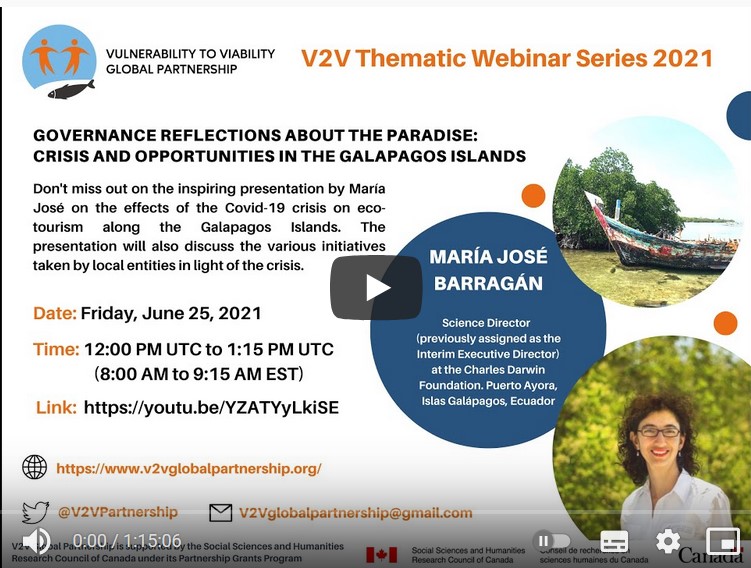 The Galapagos Islands located some 1200 km west of continental Ecuador have not only captured the imagination of Charles Darwin during the circumglobal voyage of the Beagle in September 1835, but of countless scientists and tourists ever since; without forgetting the pirates, whalers and other seafarers depositing their letters in Whaler's Barrel Postbox on Floreana since the late 18th century. Whoever passed by would pick up any letters destined to close to home and would deliver them personally in exchange for a cup of tea - a habit kept alive by modern tourists. María José Barragán, current science director of the Charles Darwin Foundation in Puerto Ayora, takes us through the research station's development phases since its creation in 1959 and the ups and downs of its scientific and social work in support of the Galapagos National Park to study and protect its unique biodiversity. Click on the picture to see the registration of her talk.
The Galapagos Islands located some 1200 km west of continental Ecuador have not only captured the imagination of Charles Darwin during the circumglobal voyage of the Beagle in September 1835, but of countless scientists and tourists ever since; without forgetting the pirates, whalers and other seafarers depositing their letters in Whaler's Barrel Postbox on Floreana since the late 18th century. Whoever passed by would pick up any letters destined to close to home and would deliver them personally in exchange for a cup of tea - a habit kept alive by modern tourists. María José Barragán, current science director of the Charles Darwin Foundation in Puerto Ayora, takes us through the research station's development phases since its creation in 1959 and the ups and downs of its scientific and social work in support of the Galapagos National Park to study and protect its unique biodiversity. Click on the picture to see the registration of her talk.
The Galapagos Islands still fascinate, but their fauna and flora are a far cry of what they used to be before rapacious harvesting of their land and marine fauna, introduction of alien species, particularly rodents, and increasing permanent and tourist populations have impacted them in ever growing ways. And thanks to the unprecedented development of modern long distance fishing fleets their relative remoteness affords little or no protection, while presenting significant challenges to the National Park Organisation and the Ecuadorian coast guard to monitor, surveil and control their vast ocean territory. The talk delivered live on Friday, 25 June, is part of the 2021 webinar series of the V2V Research Project, in which Mundus maris is a partner.










